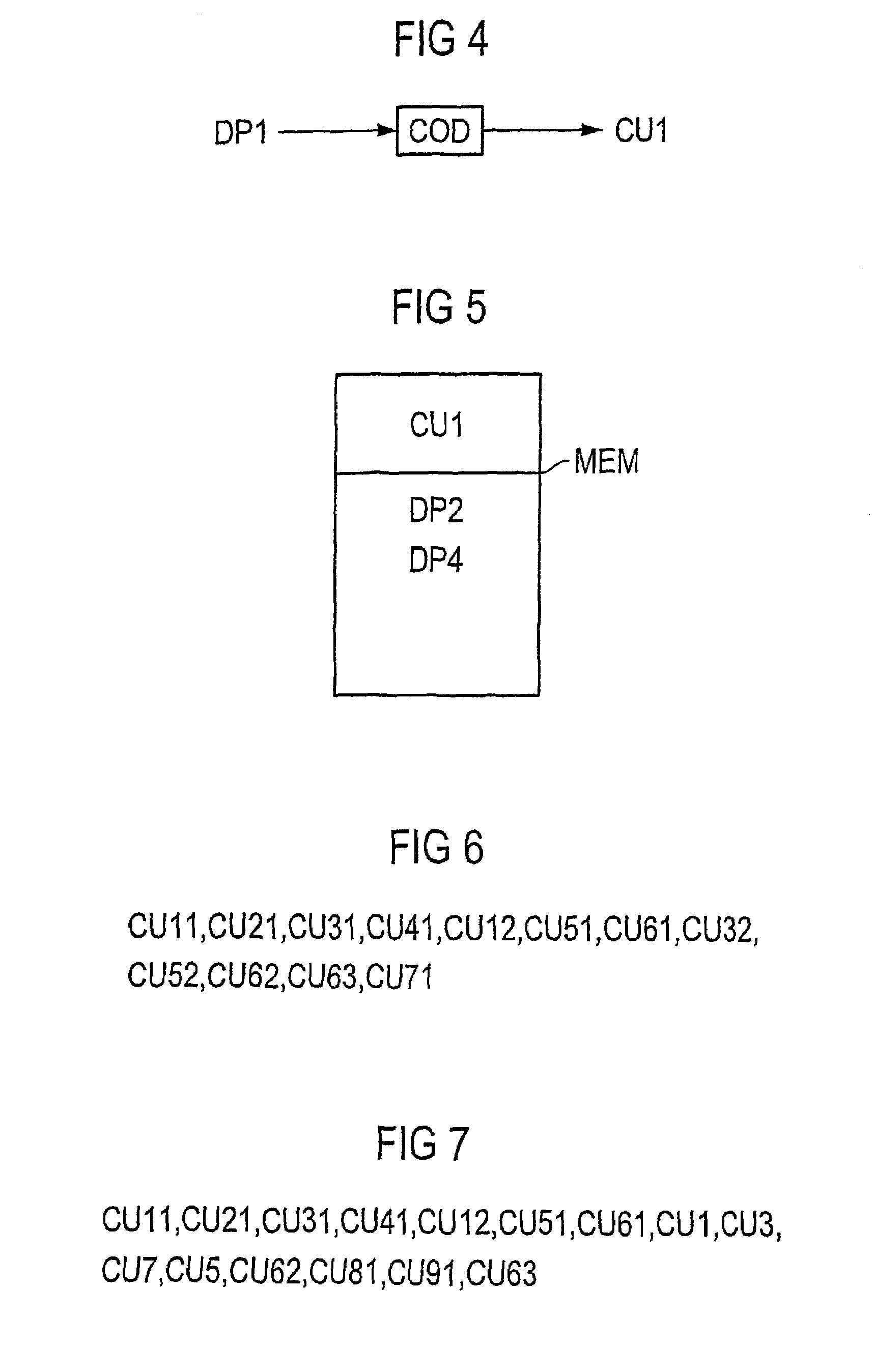Method for transmitting data packets in a communication system and corresponding transmitter and receiver
a communication system and data packet technology, applied in data switching networks, instruments, frequency-division multiplexes, etc., can solve the problems of reducing the maximum permissible transmission rate, small transmit windows, and high memory consumption of undecoded coding units, so as to reduce the memory utilization level
- Summary
- Abstract
- Description
- Claims
- Application Information
AI Technical Summary
Benefits of technology
Problems solved by technology
Method used
Image
Examples
Embodiment Construction
[0034]Reference will now be made in detail to the preferred embodiments of the present invention, examples of which are illustrated in the accompanying drawings, wherein like reference numerals refer to like elements throughout.
[0035]FIG. 1 shows a mobile radio system as an example of a communication system for transmitting data packets. For this mobile radio system, the type of multiple access method is of no significance. By way of example, it can be a system using TDMA and / or CDMA multiple access methods.
[0036]The base station BS has a transmission unit TX, a reception unit RX, a coding unit COD and an evaluation unit A. The mobile station MS likewise has a transmission unit TX and a reception unit RX. It also has a decoding unit DEC and a memory MEM. The coding unit COD in the base station BS codes data packets to form coding units CUm; CUmn. These are transmitted from the transmission unit TX to the reception unit RX in the mobile station MS. The received coding units are store...
PUM
 Login to View More
Login to View More Abstract
Description
Claims
Application Information
 Login to View More
Login to View More - R&D
- Intellectual Property
- Life Sciences
- Materials
- Tech Scout
- Unparalleled Data Quality
- Higher Quality Content
- 60% Fewer Hallucinations
Browse by: Latest US Patents, China's latest patents, Technical Efficacy Thesaurus, Application Domain, Technology Topic, Popular Technical Reports.
© 2025 PatSnap. All rights reserved.Legal|Privacy policy|Modern Slavery Act Transparency Statement|Sitemap|About US| Contact US: help@patsnap.com



